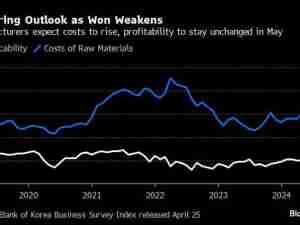Philippine GDP Growth Tops China as Election Spending Climbs
By: Cecilia Yap and Siegfrid Alegado | May 18 2016 at 11:40 PM | International Trade
The Philippine economy grew faster than most other nations in Asia in the first quarter, spurred by spending ahead of the May elections.
Gross domestic product increased 6.9 percent in the three months through March from a year earlier, the highest in almost three years, the Philippine Statistics Authority said in Manila Thursday. That was in line with the median estimate in a Bloomberg survey of 16 analysts, and compared with expansion of 6.5 percent in the previous quarter.
Incoming President Rodrigo Duterte has pledged to retain the economic priorities of the outgoing administration of Benigno Aquino, policies that led to the nation’s first investment-grade ratings and its best period of growth since the 1970s. That’s provided investors with more certainty after a divisive election campaign dominated by Duterte, a tough-talking mayor who won support with his populist rhetoric and pledges to fight crime.
Duterte “will be handed an economy that is in very good health,” Daniel Martin, a senior Asia economist at Capital Economics Ltd. in Singapore, said in a note to clients. “A sudden shift in policy or a disruption of the political stability that has characterised the last six years could cause sentiment to sour and growth to weaken.”
Growth was the fastest of other Asian nations that have also reported first-quarter data. Expansion is forecast to remain strong this year, underpinned by remittances from Filipinos abroad and expansion in outsourcing industries, such as call centers.
Government consumption surged 9.9 percent in the first quarter from a year ago, while household expenditure climbed 7 percent. The two categories contribute about 70 percent to GDP, making the Philippines among the least reliant in Asia on export demand for growth.
On a quarterly basis, GDP rose 1.1 percent compared with the previous three months, when it expanded 2.1 percent.
“The Philippines will outperform in the region this year, driven by domestic demand,” Joseph Incalcaterra, a Hong Kong-based economist at HSBC Holdings Plc, said before the GDP report. “Increased infrastructure spending, strong remittances in peso-terms and consumption spending—all these are telling us a robust growth story.”
Philippine stocks fell 1 percent, ending four days of gain, while the peso, the best-performing Asian currency this month, slid 0.5 percent to 46.89 per dollar as of 11:29 a.m. in Manila.
The central bank this week cut its benchmark rate to a record-low of 3 percent, narrowed the band around it and introduced a new deposit tool, as part of moves to strengthen monetary policy.








